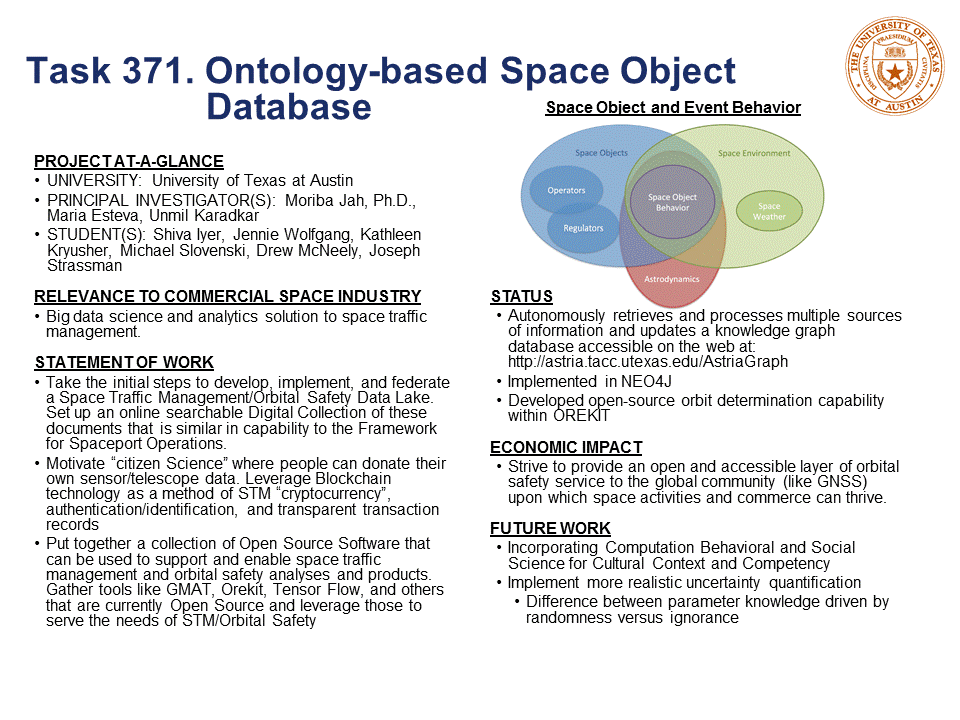371. Space Object Database
Team
| Name | Role | Primary |
| Pat Hynes | Principal Investigator | ● |
| Stephen Earle | Tech Monitor | ● |
| Cammiea Archuleta | Fiscal Admin | ● |
| Crystal Luchini | Fiscal Admin | ● |
| Patricia True | Contract Admin | ● |
| Joylynn Watkins | Research Assistant | ● |
Project Description
The ultimate goal of this research project is to develop a method that combines and uses space situational awareness (SSA) observations from multiple sources. Establishment and implementation of this method poses a number of questions and challenges that this research project intends to address in multiple phases.
Project Outcomes
- The methodology we hope will evolve a group of colleagues to enable us to use an open architecture, with the capability to accept observations from multiple sources, use interchangeable software modules to compute orbital parameters and populate a master catalog, and allow alternate approaches to predict and analyze potential conjunctions. This group of collaborators from government, industry and academia, is needed now as this is a long term solution to an already difficult problem facing the commercial space transportation industry’s ability to assure successful, safe, space operations.2. The approach will be designed to maximize the use of commercial capabilities.3. Transparency is a key principle; however, classified and/or sensitive U.S. space operations will be protected appropriately, both by technical means and via operational procedures.
Summary of Output
Each phase of this research project will address the questions posed, and challenges encountered, in pursuit of this program’s ultimate goal.
Phase 1 will identify the context and boundary conditions of this research task, including an exhaustive literature and program search to identify
(a) prior theoretical and practical work in this area,
(b) the characteristics of the different sources and types of information to assess its suitability, or the extent of conditioning that would be required to make it useable,
(c) the limitations and challenges that the different types of data poses, and possible ways to overcome these hurdles,
(d) the differences and challenges posed through the use of the STM system for research or operational use, and
(e) current sentiments, reservations, and support for this work as expressed in archival data sources and through primary data collection (e.g., interviews, conferences, workshops, and other forms of primary data collection that can address questions regarding data transparency and openness).
Phase 2 of this project will begin the process of developing a support mechanism for combining and exploiting SSA observations that have inherently different types of uncertainty and rigorously quantify the utility of any given algorithm or S&T method.
Quad Chart
